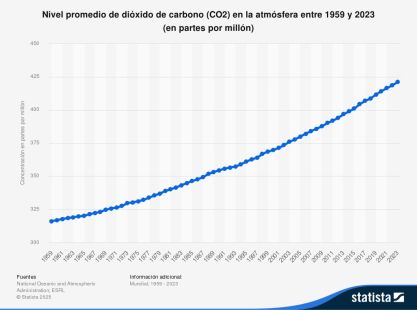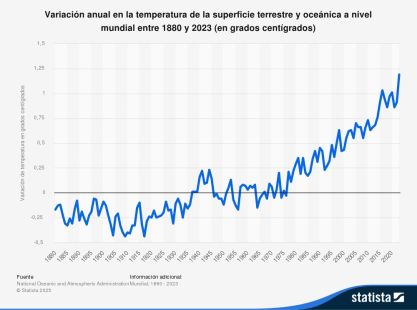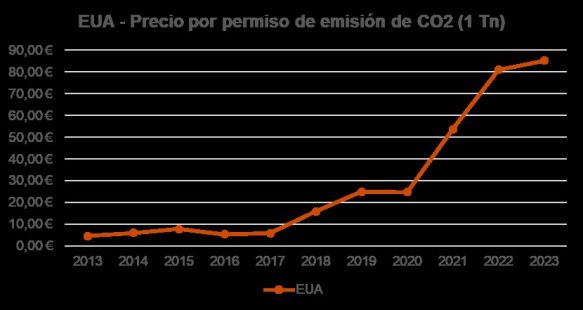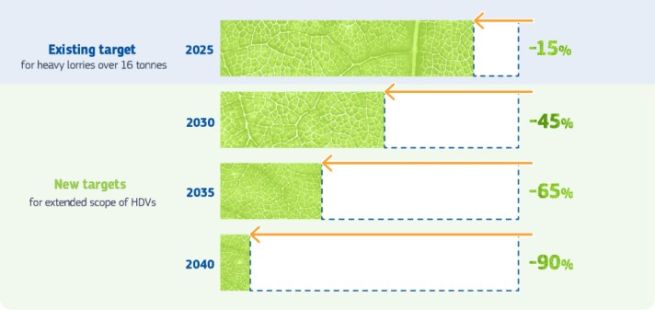
The Roadmap to Decarbonization: Emissions Trading Systems
Climate change is one of the most pressing challenges facing humanity in the 21st century. The accumulation of greenhouse gases (GHGs) such as carbon dioxide (CO₂) and methane (CH₄) has led to a steady increase in global average temperatures. The correlation between these factors is undeniable when analyzing historical data trends.


At a global level, initiatives such as the 2015 Paris Agreement have been implemented, in which the international community committed to limiting global temperature increases to below 2°C compared to pre-industrial levels, with an ideal target of not exceeding 1.5°C.
Achieving this goal requires a profound transformation of energy and industrial systems, a process known as decarbonization. This transition involves drastically reducing CO₂ emissions and other GHGs, particularly in key sectors such as industry, power generation, and transportation.
In this context, the European Union (EU) has implemented an ambitious regulatory framework through Emissions Trading Systems (ETS1 and ETS2), designed to encourage economic actors to reduce their emissions in an efficient and cost-effective manner.
Additionally, energy optimization is a top strategic priority. Beyond environmental protection and concerns for the future of our planet, there is also an immediate economic necessity. Europe, and particularly Spain, lacks natural resources such as oil and natural gas, making it dependent on countries with often opposing geopolitical interests. As developing economies continue to grow, this dependence could become even more precarious.
While environmental policies are sometimes perceived as a constraint on economic progress, current decarbonization efforts align closely with business interests. Furthermore, the availability of hydrocarbons remains a long-term risk, regardless of differing perspectives on the matter. This is why renewable energy sources present an undeniable opportunity to build stronger businesses while ensuring a sustainable environment for future generations.
Carbon Emissions and ETS1 & ETS2: Key Tools for the Green Transition
The European Union Emissions Trading System (EU ETS) was introduced in 2005 as the primary instrument for reducing greenhouse gas emissions. ETS1 covers large industrial emitters and power generation sectors, requiring companies to purchase or receive emission allowances that permit them to release a certain amount of CO₂ into the atmosphere. CO₂ prices per ton have stabilized or even decreased in some cases due to economic slowdowns, but projections indicate a price increase as 2030 approaches.
CO₂ Emission Allowance Prices

(Source: PWC)
Starting in 2027, ETS2 will be implemented, expanding emissions trading to cover road transport and buildings—two sectors previously unregulated under the ETS framework but responsible for a significant percentage of GHG emissions in Europe. Additionally, other industries previously excluded from ETS1 will now be regulated. From 2027, a fixed-price period of three years will be applied to these allowances, set at €45 per ton of CO₂.
The impact of ETS2 on the transport sector, particularly on heavy-duty vehicles, will be substantial. The inclusion of this sector in the Emissions Trading System will require truck and bus operators to account for the cost of their carbon emissions, creating a strong incentive to adopt cleaner and more efficient technologies. The rising costs of fossil fuels, driven by the need to purchase emission allowances, will make electrification and biofuels increasingly attractive. Battery electric vehicles (BEVs) and hydrogen-powered vehicles (both fuel cell and combustion engine hydrogen models) are emerging as viable alternatives for heavy transport, though challenges remain in terms of infrastructure and initial costs.
In 2023, the EU raised its CO₂ reduction targets, significantly expanding regulations on heavy-duty transport. The modified regulation now includes almost all emissions from heavy vehicles, applying not only to heavy trucks but also to medium-sized trucks, urban buses, coaches, and trailers. The revised targets are even more ambitious, as illustrated below:
CO₂ Reduction Targets for Heavy-Duty Vehicles

(Source: European Commission)
Emissions Trading as a Path to Sustainability
As we have seen, the fight against climate change requires effective and structural solutions, and Emissions Trading Systems (ETS1 & ETS2) have become key tools in this complex puzzle. More than just market mechanisms, they represent a strategic approach to transforming the carbon economy, driving the transition toward a sustainable model without compromising economic growth.
The roadmap to decarbonization is neither simple nor linear, but ETS frameworks provide a clear and effective structure for addressing this global challenge. Every step forward in this direction not only reduces emissions but also sends a clear message:
We are committed to a future where economic development, social justice, and environmental protection go hand in hand.
Coming Next: Don’t miss our next blog on decarbonization: “Hydrogen, Biogas, and Electrification: Key Drivers for Zero-Emission Transport.”
References
- Average atmospheric CO₂ levels (1959–2023). Statista. Source
- The Paris Agreement, Climate Change. United Nations. Source
- ETS2: Buildings, Road Transport, and Additional Sectors. European Commission. Source
- Reducing CO₂ Emissions from Heavy-Duty Vehicles. European Commission. Source
- CO₂ Emission Allowance Transfer Prices. PWC. Source

